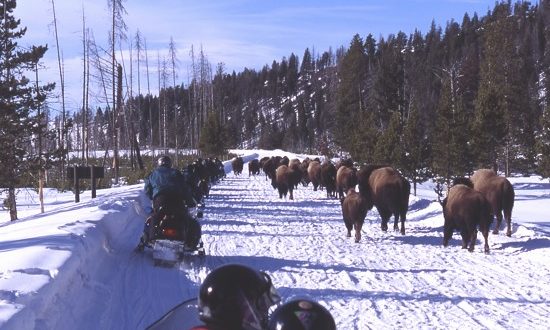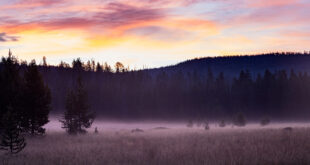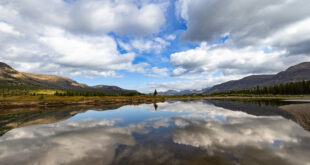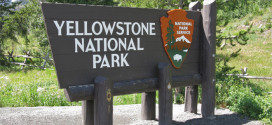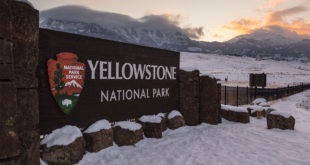With declining snowpack predicted throughout the Rocky Mountain West due to climate warming, a recent study suggests snow levels in some parts of Yellowstone won’t be deep or consistent enough to support a full season of over-snow travel as early as mid-century, according to two Yellowstone-area scientists.
“Places that are going to have the worst snow are places that already have the least snow now,” one of the study’s authors, Mike Tercek, of Gardiner, Montana said.
The study, “Forecasts of 21st Century Snowpack and Implications for Snowmobile and Snowcoach Use in Yellowstone National Park”—http://journals.plos.org/plosone/article?id=10.1371%2Fjournal.pone.0159218#ack—was published earlier this year on the open-access, peer-reviewed website for scientific publication PLOS ONE. The authors are Gardiner, Montana-based contract scientist, Michael Tercek and National Park Service branch chief for physical sciences Ann Rodman.
Yellowstone has a winter season from mid-December to early March when only oversnow vehicles such as snowmobiles and multi-passenger snowcoaches, are allowed on some, but not all, interior park roads.
Tracked vehicles enter the park at the East, South and, most heavily used, West Entrance. From the North Entrance at Gardiner to the Northeast Entrance at Cooke City is kept open year-round to wheeled vehicles.
In the study’s abstract, or summary, the authors focus on the implications future snow declines may have for oversnow travel because “oversnow tourism is critical to the local economy and has been a contentious issue in the park for more than 30 years.”
The areas predicted to be hardest hit by less snowpack are the North and West Entrances, the study states. At the North Entrance, staging from a wheeled vehicle to a tracked one traditionally happens at the Upper Terrace Drive above Mammoth Hot Springs, but already in the recent past, sometimes that staging is moved farther south and to higher elevation to reach adequate snowpack.
Between 2030 and 2060, the West Entrance road could have a 59-percent drivability on average, Tercek said in a phone interview.
“But this doesn’t mean every season will have 59-percent driveability,” Tercek said, referring to averages over a span of years. “There could big years, but there could also be whole winters that aren’t driveable.”
And by 2090, what we consider a bad year will be average, he added.
Tercek said about 10 centimeters of snowpack on the road—about 4 inches—is the minimum required to operate a snowmobile.
The study data suggests there could come a point where it just makes more sense to plow the West Entrance road and allow cars to drive on it.
But the winter economy based on oversnow vehicles is important to the communities surrounding Yellowstone, currently generating about $60 million annually, Tercek and Rodman wrote.
Summer visitation to Yellowstone has topped 4 million the past couple of years, and the winter visitation is only 3-4 percent of that, but winter trips cost more person, and contribute to the economy in the otherwise very slow winter months.
Plowing the roads might allow more people to visit, but visitors who arrive in their own cars don’t spend as much per person as oversnow visitors.
“A potential switch to conventional automobile travel during the winter may reduce tourism revenue and increase crowding in areas that were previously more difficult to access,” the study states.
The park has already made the move away from the tracked Bombardier snowcoaches, which were sold through an online auction this spring. The park moved toward a bus that travels on large, under-inflated tires that can travel on snow or pavement.
The climate modeling suggests that the South Entrance area will maintain the most amount of snow in the future.
——-
More information about Mike Tercek’s work can be found on his website, www.yellowstoneecology.com. Tercek holds a Ph.D. in ecology and evolutionary biology from Tulane University.
 Yellowstone Insider Your Complete Guide to America's First National Park
Yellowstone Insider Your Complete Guide to America's First National Park
